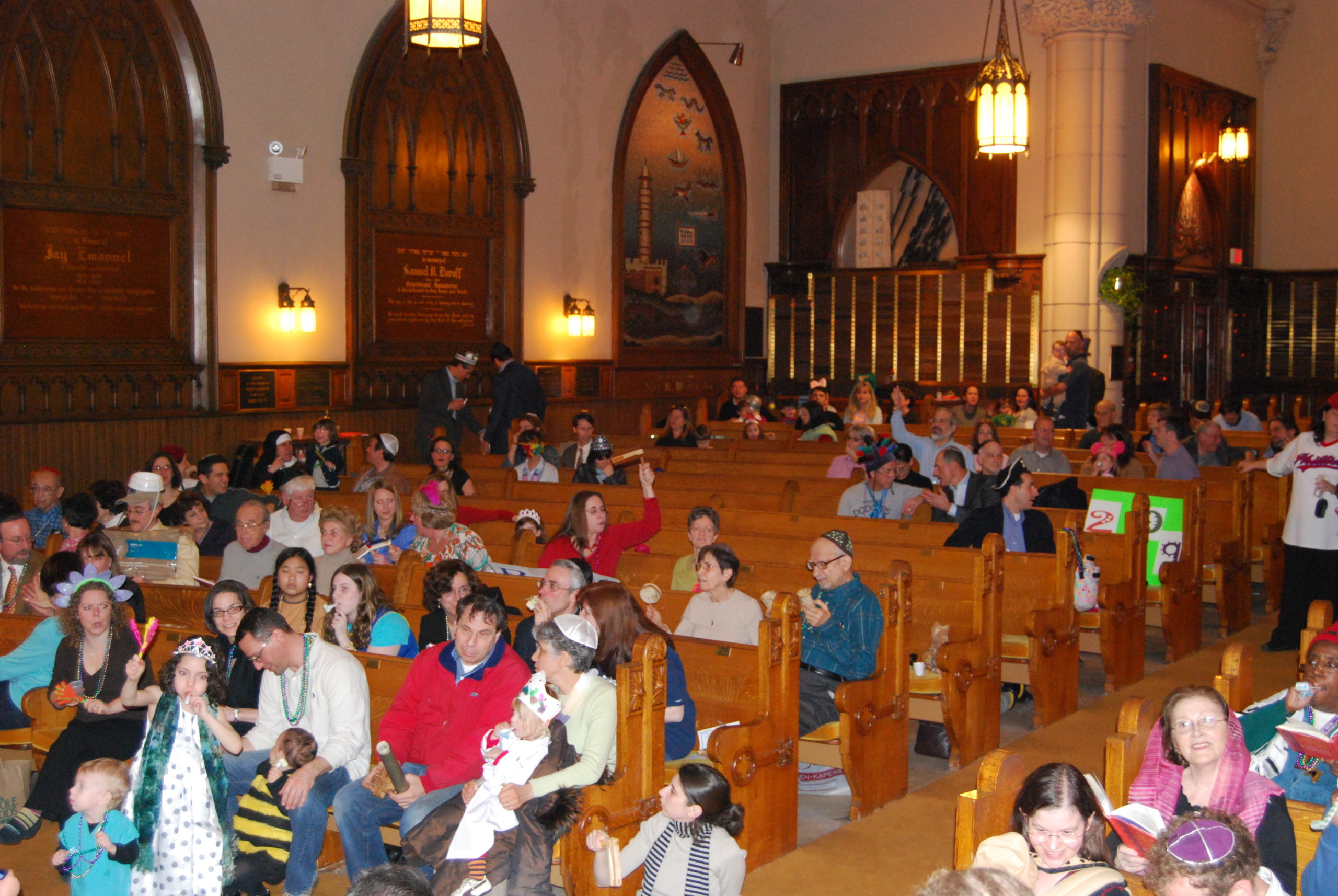Just a block away from Philadelphia’s beautiful Rittenhouse Square, Temple Beth Zion-Beth Israel (BZBI) has been a fixture of Center City since 1954. The original synagogue, Temple Beth Zion, held its first services in 1946. After acquiring a breathtaking neo-Gothic former church at the corner of 18th and Spruce Streets, it merged in 1964 with one of Philadelphia’s oldest synagogues, Temple Beth Israel, which was founded in 1840. Today, BZBI is a vibrant congregation of about 600 households that practices Conservative Judaism with egalitarian worship.
Over the last decade, leaders of Beth Zion-Beth Israel were increasingly aware of their historic building’s structural needs; however, the congregation was just meeting its annual budget requirements and there was little financial leeway to make necessary improvements. Executive Director Donna Rosenthal explains, “You just push off maintenance. But at a certain point, you realize that this is going to be a problem.”
That point came in late 2005, when the air conditioning units serving the sanctuary and the social hall began to leak condensate water. The congregation had already discovered heavy water damage after plaster fell from the sanctuary ceiling earlier that year, so when the leak forced an air conditioning shutdown during High Holiday services – when the synagogue was filled with its largest annual crowd – “it was a ‘last straw’ moment for us,” says Rosenthal. Along with water damage from faulty gutters and the resulting rotting roof timbers, the building faced a serious threat from its failing roof, which demanded immediate attention.
Fortunately, the congregation was in the midst of a successful capital campaign. Guided by a professional feasibility study, the congregation had set a goal of $5 million, conducted its fundraising largely internally, and raised $4.8 million by 2007.
Nevertheless, the story was far from over. After formulating an architectural master plan, the congregational leadership realized that it needed at least an additional $5 million to meet their building’s needs. The master plan identified several unanticipated yet critical projects, such as installing a new fire alarm system, bringing the electrical wiring up to code, and putting the finishing touches on the building’s water-management system.
To supplement their own fundraising efforts, BZBI applied for and was ultimately awarded a $35,000 grant from Partners for Sacred Places, on the condition that it would participate in an upcoming New Dollars/New Partners for Your Sacred Place training session. From 2008 to 2009, a team of professional and lay leaders from the synagogue attended five sessions dedicated to teaching congregations the tools to successfully handle fundraising initiatives and historic preservation of their sacred places.
For an experienced congregation like Temple Beth Zion-Beth Israel, certain aspects of the training were basic review. It knew, for example, how to work with architects and write case statements for large capital campaigns.
But the BZBI New Dollars/New Partners team was inspired by asset mapping, an exercise that asks a congregation to list all of its resources, gifts, and talents. No matter the religious or denominational affiliation, it is often all too common for members of sacred places to take their congregational initiatives for granted, and not fully understand their scope or significance. Asset mapping can play an integral role in helping a congregation recognize its capacity as a community resource, as well as the economic value of the services and programs it offers.
Consequently, the BZBI representatives took a closer look at the services their congregation provides, and were impressed with the results. While many of the synagogue’s programs primarily serve congregation members, such as the early education and Hebrew school programs, they were still very valuable for anchoring the synagogue in the community – if BZBI did not run an early childhood education center, for example, people would have to look elsewhere for the service. Similarly, the building’s space was frequently used by outside organizations for meetings, concerts, and even job fairs for the homeless. “All of these things have dollar values,” notes Rosenthal. The congregation realized the scope of its effect on the greater community and rallied around it as a tool for fundraising.
Rosenthal believes that the training has left an important impression on the congregation, adding, “It’s given us a renewed sense of purpose. In faith-based work, that’s important for momentum.” By truly recognizing the synagogue’s role as an asset to Center City Philadelphia, BZBI has galvanized its volunteer base. The same core group of volunteers that attended the New Dollars/New Partners training has continued to work together for the good of the congregation – and by extension, that of the wider community as well.

